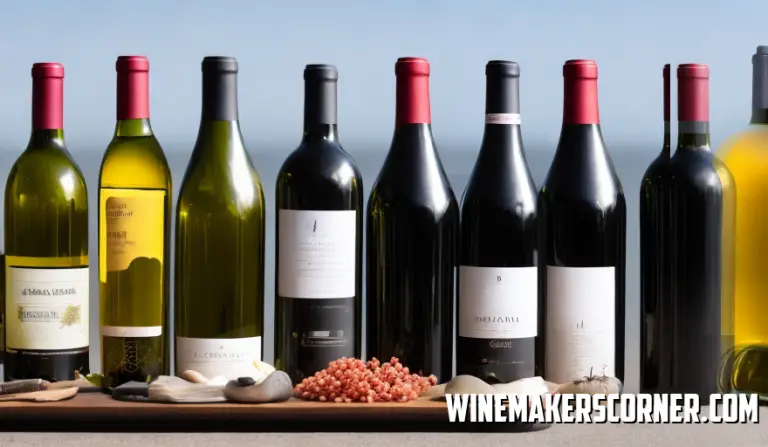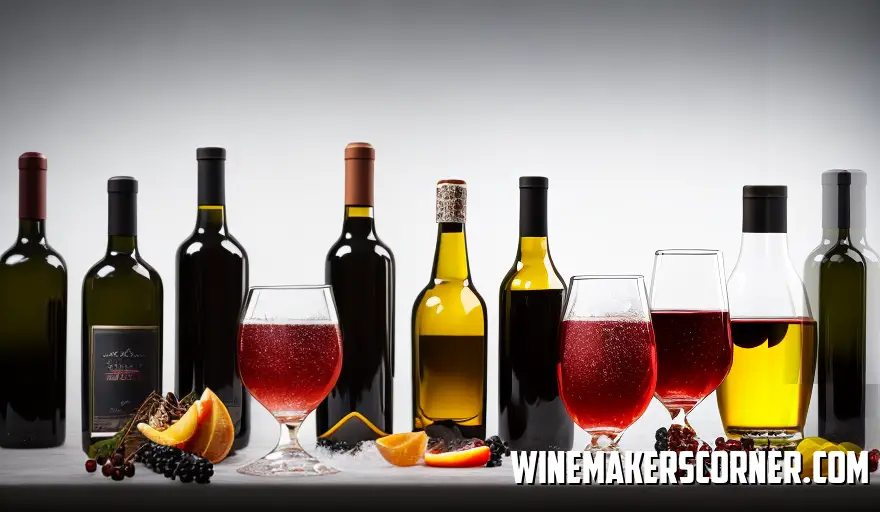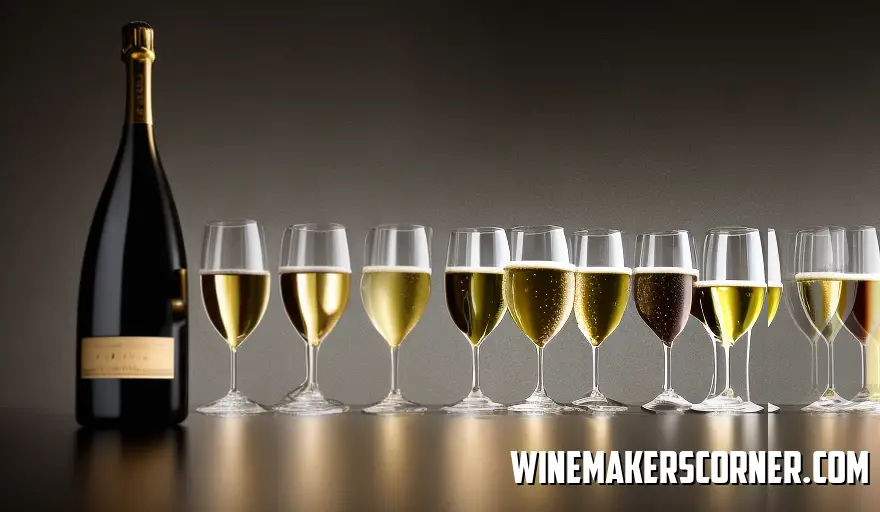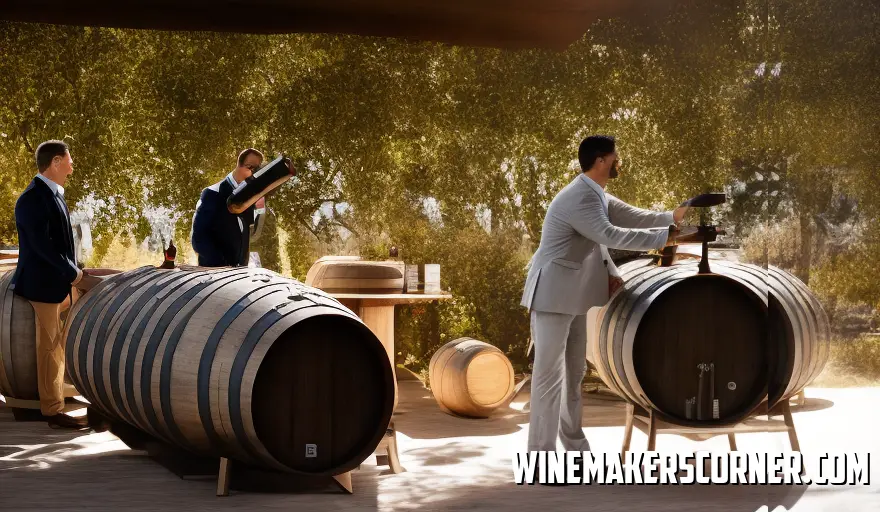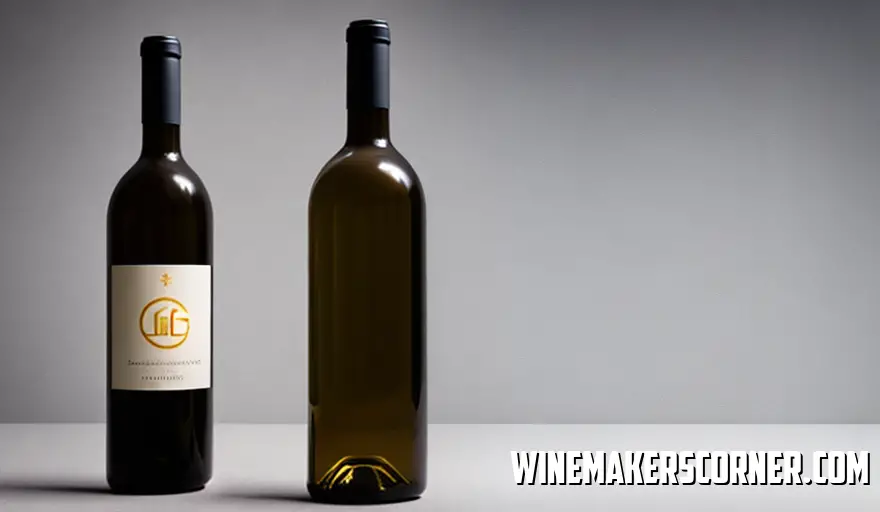Wine is undoubtedly one of life’s greatest pleasures – full-bodied or light, sweet or dry – it has something for everyone! The intricacies behind this beloved drink might leave even seasoned experts confused: What do all these classifications mean? How do they impact what’s inside your glass?
But fear not, fellow wine enthusiasts! We’re here to guide you on an exciting journey through the world of wine categories. Together, we’ll explore Old World traditions and New World innovations, making sense of those pesky appellations and AVAs and deciphering cryptic labels. Hence, you know exactly what you’re drinking and learning about the various quality designations from everyday table wines to ultra-exquisite Grand Crus. So let’s raise a glass to our exciting adventure ahead!
Table of Contents
Understanding Wine Classifications
Wine classification may appear daunting to many; however, understanding this process can enhance your appreciation for wine. So let us venture into the captivating universe of wine categories together! “wine classification” refers to how wines are grouped according to varietal type, region origin production techniques, and quality standards. Familiarizing oneself with these groupings can make selecting bottles or pairing them with meals much easier! The Old World – Europe – houses some of the more complex systems out there: France’s Appellation d’Origine Contrôlée (AOC) outlines stringent regulations regarding grape varieties utilized as well as plants cultivated in vineyards and winemaking processes used; Italy boasts their Denominazione di Origine Controllata (DOC) system whose emphasis lies on regional identity much like France does; meanwhile, Germany highlights the ripeness level and sugar content in grapes during harvest time with their Prädikatswein system.
Moving on to Spain’s Denominación de Origen (DO) system, we can see that it emphasizes geographic location and aging requirements. However, suppose we shift our focus to the New World countries such as the United States, Australia, and Chile. In that case, their approach is more flexible yet still adheres to regionality via American Viticultural Areas (AVAs), Australian Geographical Indications (GIs), and Chilean Denominación de Origen (DO) systems. Quality also plays an integral role in classification across all regions.
For instance, the Cru Classé hierarchy for Bordeaux wines in France ranks chateaus according to historical prestige and quality. Similarly, due to stricter regulations, Italy’s DOCG tier represents a higher level than DOC. Also, sparkling wines have unique classifications, with Champagne exclusively from France’s Champagne region and Prosecco from Italy’s Veneto area.
Lastly, Cava is Spanish bubbly!
Before we conclude this topic of wine classification systems, let us not forget about sweetness levels. When it comes to wines, there is a wide range of flavors and sweetness levels; one prime example of this is Germany’s Prädikatswein system, where terms like Kabinett, Spätlese, and Trockenbeerenauslese reflect varying grape ripeness and sweetness levels in the wine. At the same time, wine classification may seem complicated initially, but it’s the key to discovering some unique flavor profiles.
By learning the different categories, you can confidently navigate the world of wines. Cheers!
The Old World vs. New World Approach
One key distinction emerges when exploring wine classification techniques globally, Old World versus New World. Both categories have unique characteristics; grasping these differences can elevate one’s appreciation for diverse wines worldwide.
Wines from Europe, including France, Italy, Spain, and Germany, are considered the old world since winemaking traditions date back centuries. Conversely, newer wine regions such as Argentina, South Africa, Australia, and the United States are called the “new world” with global recognition for excellence. Old World winemakers prioritize showcasing their region’s unique environmental factors (terroir) within each bottle they produce; this results in nuanced yet intricate flavor profiles boasting subtlety that fully highlight the surrounding environment’s influence on each grape varietal. Meanwhile, new world wineries focus on innovative techniques by embracing fruit-forward flavors resulting in bold wines with intense aromas and taste profiles catering to a broader range of palates.
Classifying wine can vary widely depending on whether you’re dealing with an Old or New World country. In general, Old World countries (such as France) have strict appellation systems that prescribe particular grape varietals and viticultural practices to maintain each region’s unique identity over time. Meanwhile, New World countries (like the United States) tend to be more flexible regarding regulation—although they have some classification systems like AVA. This relaxed approach allows producers greater freedom to experiment with grape-growing and winemaking techniques without being hampered by strict rules about what they can or cannot do.
But which style is better? That depends on individual taste preferences! Some people love the elegance of Old World wines, while others enjoy the creativity of New World wines like Californian Zinfandel. To truly master wine classification, it’s essential to appreciate the differences between these two approaches—a journey into history, terroir expression & innovation that will enrich your appreciation of this beautiful drink. Cheers!
Varietal vs. Regional Classifications
To understand wine categories better, we need to know about two essential classification systems: varietal and regional classifications. Both offer valuable insights into the world of wine but use different approaches.
Varietal classification groups wines by their primary grape variety, simplifying the selection process for consumers in New World countries such as Australia, South Africa, and the United States.
By emphasizing the grape type rather than other factors like soil or climate conditions, it results in popular varietals such as Chardonnay, Cabernet Sauvignon, or Pinot Noir.
Old World regions like France, Italy, and Spain have used regional classifications for centuries. They focus on where a particular type of wine is produced with terroir -referring to soil quality, weather conditions, and other environmental aspects- crucial factors shaping its taste characteristics. For instance, Bordeaux wines from France exemplify why regional classification is vital when picking up a bottle of wine. Whether a blend of Cabernet Sauvignon and Merlot grapes originates from Medoc or Saint-Émilion subregions creates distinct tastes that connoisseurs appreciate.
Such wines can be classified through varietal or regional approaches; both have advantages worth considering. Choosing a varietal sort is beneficial as it provides an introduction focused on identifying different grape types with ease; selecting a regional kind allows for exploring diverse terroirs that influence flavor profiles in intriguing ways. Ultimately, comprehending both methods enables one to unravel wine category mysteries while broadening their palate.
The Role of Appellations and AVAs
The world of wine classification can be complex due to the numerous categories and appellations one may encounter while learning about it. This article focuses on Appellations and American Viticultural Areas (AVAs), two crucial elements for classifying wines accurately by understanding their characteristics and qualities better. Appellations define territorial boundaries for producing wine that indicates its origin’s rate and other specific features, such as climate or soil types found within those areas.
Since France’s Appellation d’Origine Contrôlée (AOC) system factors terroir while labeling wines from particular regions, AOC makes an excellent example. Similarly, AVAs serve the same purpose within the US alongside TTB regulations establishing climatic/geographic distinctions between each designated area influencing wine production. With more than 250 American Viticultural Areas (AVAs) spread throughout the country, wine enthusiasts appreciate hunting down bottles from particular appellations or regions because each area offers distinguishing flavors and characteristics.
For example, Napa Valley in California has become well known worldwide for its bold Cabernet Sauvignon; Burgundy in France boasts excellent Pinot Noir. Notably, winemakers’ diverse production methods play a significant role across every appellation or AVA; thus, not all wines produced have identical characteristics. Nevertheless, these classifications provide valuable knowledge and insight into what you might expect to taste when you pop open a bottle from a specific region.
Therefore understanding appellations and AVAs is crucial when navigating the intricate world of wine classification. These designations assist in identifying quality and origin while offering hints into possible flavor profiles that one can encounter when exploring new wines.
Remember, knowledge is vital in decoding the secrets behind your preferred vintages! So go ahead and clink those glasses to that!
Decoding Wine Labels
Deciphering wine labels can be intimidating, especially for newcomers. Fortunately, we’re here to reveal the secrets behind those elegant designs and simplify your wine-shopping experience.
First up: understanding the producer name that often dominates the label. Wine producers pride themselves on delivering quality products under their brand name – seek out words you trust or ask for recommendations from friends and experts you trust. Then focus on where your bottle comes from: New World (think America, Australia) or Old World (Europe). Each region has unique characteristics affecting its taste – it’s up to you what suits your palate best! And don’t forget about vintage – check out previous years’ harvests since they could impact your bottle of choice.
So here we are talking about varietals – or what kind of grape was used to make that delicious wine in your glass? Cabernet Sauvignon? Merlot? Chardonnay? Pinot Noir?
These are all examples of popular varietals! Each type of grape contributes its flavors and characteristics to the final product – which means understanding these subtle differences is vital when picking out your next bottle of vino. But what about all those fancy labels and classifications we see at the store? Fear not! Countries use different systems to indicate quality levels in specific regions or appellations (areas with certain growing conditions).
For instance, you might have heard of Frances Appellation d’Origine Contrôlée (AOC) or Italy Denominazione di Origine Controllata e Garantita (DOCG). These labels give us some insight into a wine’s pedigree. So don’t be intimidated by all the terminology – keep an eye out for the critical stuff: producer, origin, vintage, varietal, and classification.
You can pick out thayou’llerfect bottle in no time with some practice. The pandemic has made remote working a necessity for many in recent times. Despite its newfound prevalence, however, many issues surrounding remote working require careful consideration by both employees and employers.
According to OWL Labs’ research on joLabs’isfaction levels among remote workers, 71% of people reported higher overall job happiness than working in an office. This is undoubtedly partly because people feel less restricted by rigid schedules created by traditional office environments.
But with increased freedom comes the risk of overworking oneself – leading to burnout, coupled with potential feelings of isolation due to no face-to-face contact between colleagues. What’s needed is a what’s between autonomy for workers and allowing them opportunities for socialization when required. To reconcile these issues, bosses must provide their teams with adequate technological support systems to have all necessary communication channels available when needed. Additionally, workers and employers should agree on terms and parameters surrounding how much time should be devoted exclusively to professional commitments throughout any given day or week. With the right tools, though, this change could ultimately improve well-being across all involved parties!
Quality Designations: From Table Wine to Grand Cru
The world of wine classifications can be overwhelming, but quality designations are a roadmap for consumers, connoisseurs, and professionals navigating different categories. Let’s explore differLet’sine levels starting with table wines up to Grand Cru. Table wines or Vin de Table represent the most straightforward level found across various winemaking regions worldwide, made from grape blends, delivering straightforward yet pleasing beverages without emptying your wallet! IGP (Indication Géographique Protégée) is moving up one level, showcasing regional characteristics linked to their geographical origins at affordable prices with assurance ensuring that at least 85% of grapes used come from designated areas for this classification type.
Digging deeper into quality designations will lead us to AOP (Appellation d’Origine Protégée) d’Originerotected Designation of Origin) classification. These wines adhere to strict production standards and originate from renowned winemaking regions like Bordeaux or Burgundy in France. With AOP/PDO status comes the assurance that each one embodies the essence and tradition of its terroir.
Then there are those at the pinnacle: Grand Cru – an exclusive category reserved for vineyards producing outstanding wines. While this designation is mainly associated with French regions like Burgundy and Alsace, other countries use it too, such as Germany (Grosses Gewächs) or Italy (Cru). Crafting a Grand Cru wine requires great care and skill on behalf of the vintners, who aim to create refined expressions of their vineyard’s unique terroir.
Understanding quality designations is critical to fully appreciating the swine of each wine – from simple table wines that offer straightforward pleasure to the illustrious Grandrepresentingesents, a pinnacle achievement in winemaking expertise and terroir expression. Let these designations guide you into the fascinating world of wine classifications.
Vintage and Nonvintage Wines
Wine enthusiasts know to pay attention to two crucial categories: vintage and nonvintage. Understanding how these classifications work can deepen your appreciation of this complex and delicious drink.
Vintage wines are produced using grapes harvested in a specific year—the label will always display this information clearly for easy identification. What makes vintage wines so sought after is their ability to capture all the unique aspects of a single growing season—like soil quality or weather patterns—that influence grape quality in fascinating ways. Nonvintage wines are blends created by combining different batches of wine from various years; winemakers use this technique to ensure consistency in taste across multiple vintages—a smart move! All blended collections must be carefully selected and combined to create an even flavor profile whenever you enjoy it.
Vintage wines hold an irresistible allure for collectors and those serious about their wine choices! Thanks to their exceptional quality or rarity, top-notch vintages can earn iconic status within the wine community. Wine enthusiasts often love trying different vintages from their preferred vineyards or regions so they can pick out subtle variations in flavor and aroma that come from distinct growing seasons. Not entirely old fashioned, nonetheless still attractive and insightful in their way, nonvintage wines have lots of appeals as well – for beginners interested in appreciating wine, these types are an ideal starting point since they typically offer consistent tastes at lower prices compared with vintage options.
Plus, nonvintage wines generally require less aging before enjoying – meaning more time! To conclude, vintage and nonvintage wines are essential in the diverse winemaking world. Each category has a unique flair: vintage wines highlight nuances from particular years. At the same time, nonvintage varieties give you dependable flavor experiences that won’t break the bankwon’tgrasping these classifications; you’ll be ready for you’ll the many exciting wine choices available! Today’s global econoToday’ss an immense test for customary models of commerce.
The pervasive impacts of technological progress and accelerated interconnectivity have brought about unprecedented transformation within this sphere. To surmount these formidable challenges successfully, companies must display agility by embracing novel technologies and welcoming innovative approaches while consistently searching for fresh avenues of growth.
Demystifying Fortified and Dessert Wines
Fortified and dessert wines usually appear mysterious to most wine enthusiasts causing them to feel hesitant when exploring these unique categories further. Nevertheless, in this section, we aim to unlock some secrets about these intriguing wines by shedding light on their peculiar characteristics and origins.
Fortified wines represent an exciting combination of traditional winemaking techniques blended with innovative approaches that involve adding distilled spirits, including brandy which halts fermentation, preserving the natural sweetness of grapes, thus increasing alcohol content and resulting in a potent flavor profile. Some significant fortified wine players include Port, Sherry, Madeira, and Marsala, each with its own regional identity and production techniques that differentiate it from others. For instance, Port comes from Portugal’s Douro ValPortugal’sas Sherry hails from southern Spain’s Andalusian Spain’s
Dessert wines, on the other hand, come in different styles of sweet sippers that are best appreciated after meals or paired suitably with desserts.
Various production methods are used to produce dessert wines, such as late harvesting and noble rot infection, which intensify sugar concentration within grapes, creating a sugary taste that’s so distinctive that you want to try some dessert wines. You might have heard of Sauternes from France or Trockenbeerenauslese from Germany. However, not all of them are fortified; some, such as Vin Doux Naturel from France or Rutherglen Muscat from Australia, may fall under both categories.
Exploring fortified and dessert wines can be a fascinating sensory experience as they offer plenty of aromas like dried fruits, toasted nuts, or savory herbs! Additionally, the palate will provide an exciting mix of flavors balanced with acidity or tannins so they don’t become overly don’t.
To conclude, fortified and dessert wines present a fantastic opportunity for those excited about discovering new things within the wine classification system. Understanding their unique production methods and distinctive flavor profiles makes it easy to appreciate these exceptional drinks.
Therefore, treat yourself to these hidden gems while relishing their rich history through Wine Classification 101.
